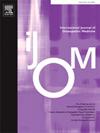整骨疗法和其他手工疗法中的安慰剂效应-它们是什么以及为什么它们对临床实践、教育和研究很重要
IF 1.5
4区 医学
Q2 MEDICINE, GENERAL & INTERNAL
引用次数: 0
摘要
安慰剂效应是在学习和预期机制的驱动下,由治疗环境引起的可测量的健康结果变化。虽然越来越多的文献和理解,它们在整骨疗法和其他手工疗法中的作用仍未被充分探索。鉴于这些干预措施固有的复杂性和人际关系性质,了解安慰剂和反安慰剂效应对于改进临床实践、教育和研究至关重要。这篇叙述性综述综合了目前关于安慰剂机制的研究及其对整骨疗法实践、教育和研究的影响。使用谷歌Scholar进行非系统文献检索,该检索由预定义的学习成果构成,并优先考虑可用的高质量研究和系统综述。为了提供一个平衡的观点,我们寻求并批判性地评估了相互矛盾的发现。本文首先回顾了安慰剂相关概念和机制的历史概况和最新总结,重点介绍了预期、环境因素和心理生物学过程如何影响手工疗法的治疗效果。在此基础上,文章提倡以人为本的生物心理社会方法,利用积极的期望,同时最大限度地减少反安慰剂效应。它还强调了需要将安慰剂科学纳入教育模式,以加强临床实践。未来的研究应该优先考虑设计良好的疗效试验,同时也要推进关于期望和学习机制如何影响手工疗法治疗结果的知识。本文章由计算机程序翻译,如有差异,请以英文原文为准。
Placebo effects in osteopathy and other manual therapies – What they are and why they matter to clinical practice, education, and research
Placebo effects are measurable changes in health outcomes arising from treatment context, driven by learning and expectancy mechanisms. While increasingly well documented and understood, their role in osteopathic and other manual therapies remains underexplored. Given the inherently complex and interpersonal nature of these interventions, understanding placebo and nocebo effects is essential for refining clinical practice, education, and research.
This narrative review synthesises current research on placebo mechanisms and their implications for osteopathic practice, education, and research. A non-systematic literature search was conducted using Google Scholar, structured by pre-defined learning outcomes, and prioritising high-quality studies and systematic reviews where available. Contradictory findings were sought and critically appraised to provide a balanced perspective.
Beginning with a historical overview and up-to-date summary of placebo-related concepts and mechanisms, the review highlights how expectancy, contextual factors, and psychobiological processes contribute to treatment effects in manual therapy. On this basis, the article advocates for a person-centred, biopsychosocial approach that leverages positive expectations while minimising nocebo effects. It also underscores the need for education models that incorporate placebo science to enhance clinical practice. Future research should prioritise well-designed efficacy trials, while also advancing knowledge of how expectancy and learning mechanisms influence treatment outcomes in manual therapies.
求助全文
通过发布文献求助,成功后即可免费获取论文全文。
去求助
来源期刊
CiteScore
2.20
自引率
36.80%
发文量
42
审稿时长
3 months
期刊介绍:
The International Journal of Osteopathic Medicine is a peer-reviewed journal that provides for the publication of high quality research articles and review papers that are as broad as the many disciplines that influence and underpin the principles and practice of osteopathic medicine. Particular emphasis is given to basic science research, clinical epidemiology and health social science in relation to osteopathy and neuromusculoskeletal medicine.
The Editorial Board encourages submission of articles based on both quantitative and qualitative research designs. The Editorial Board also aims to provide a forum for discourse and debate on any aspect of osteopathy and neuromusculoskeletal medicine with the aim of critically evaluating existing practices in regard to the diagnosis, treatment and management of patients with neuromusculoskeletal disorders and somatic dysfunction. All manuscripts submitted to the IJOM are subject to a blinded review process. The categories currently available for publication include reports of original research, review papers, commentaries and articles related to clinical practice, including case reports. Further details can be found in the IJOM Instructions for Authors. Manuscripts are accepted for publication with the understanding that no substantial part has been, or will be published elsewhere.

 求助内容:
求助内容: 应助结果提醒方式:
应助结果提醒方式:


